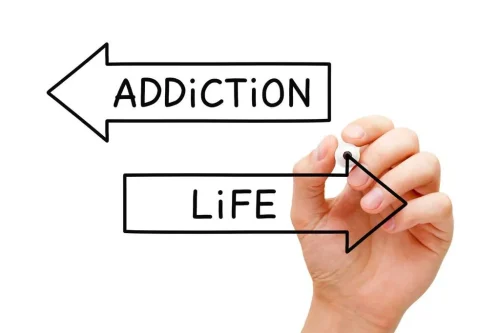16 Ago Alcoholic Neuropathy: Practice Essentials, Pathophysiology, Epidemiology

The decreases in nerve conduction velocity were significantly less in groups supplemented with acetyl-L-carnitine. In addition, acetyl-L-carnitine did not interfere with the antitumour effects of the drugs. Most patients with alcohol neuropathy initially present with symmetrical polyneuropathies in the lower distal extremities; however, heavier abuse can progress to distal upper extremity symptoms.
- Chronic abuse of alcohol depletes the pool of liver proteins which are consumed for energy production and insufficient intake of proteins only worsens this imbalance.
- It has previously been considered in relationship to nutritional, especially thiamine, deficiencies seen in alcoholics.
- And a doctor may use brain-imaging techniques to monitor treatment over time.
Benfotiamine for the treatment of alcohol related peripheral neuropathy

You might look for a support group specifically for alcoholic neuropathy or for people coping with chronic pain. You may also benefit from a support group to help you reduce your drinking or completely quit drinking alcohol. While peripheral neuropathy generally cannot be cured, there are several medical treatments that can be used to manage the pain of alcoholic neuropathy, aiding in your recovery. No significant difference between groups was observed in food and water consumption as well as in body mass gain at the end of the treatment, as demonstrated in our previous work (Conte et al., 2019a, Conte et al., 2019b) that used the same animals.
Signs and symptoms of alcoholic neuropathy
PKC and protein kinase A (PKA) are both known to be important in nociceptor function [57–59]. There are several studies suggesting the involvement of protein kinases in alcoholic neuropathy. Dina et al. [16] maintained rats on a diet to simulate chronic alcohol consumption in humans and found mechanical hyperalgesia by the fourth week which was maximal at 10 weeks. Thermal hyperalgesia and mechanical allodynia were also present with decreased alcohol neuropathy mechanical threshold of C-fibres. The hyperalgesia was acutely attenuated by intradermal injection of nonselective PKC or selective PKCε inhibitors injected at the site of nociceptive testing. Western immunoblot analysis indicated a higher level of PKCε in dorsal root ganglia from alcohol-fed rats, supporting a role for enhanced PKCε second messenger signalling in nociceptors contributing to alcohol-induced hyperalgesia [16].
When to see a doctor

Symptoms can develop just 5 hours after the last drink and persist for weeks. A diet poor in nutrients or avoiding eating can make nutritional deficiencies worse. Call for an appointment with your provider if you have symptoms of alcoholic neuropathy.
- This can result in a variety of symptoms that affect different areas of the body.
- However, bias was still considered when evaluating studies as these study types were subject to the following limitations; population selection bias, loss of patients at follow ups, bias through misclassification or misdiagnosis, patient recall and observer bias.
- Alcohol decreases the absorption of nutrients such as magnesium, selenium, and vitamins B1 and B2, causing significant deficits that affect many areas of the body, including the nerves.
- If you are having difficulty avoiding alcohol, there are resources that can help you quit.
- Uniquely, Vittadini and colleagues found a relationship between the type of alcohol consumed and neuropathy.
This study found that the response to treatment depended upon the severity of neuropathy and whether there was severe cirrhosis. Thiamine replacement improved signs of neuropathy in 7/13 patients with grade I neuropathy (objective signs of reduced pain and vibration sensation but normal reflexes) and 3/8 with grade II (marked sensory changes and decreased reflexes) neuropathy within 4 weeks. No patients with grade III (severe sensory impairment, absent reflexes, foot drop, muscle wasting) neuropathy showed clinical improvement over the 4-week period, but 4/8 did show an improvement over 3–6 months. Amongst those who did not respond to thiamine, two patients with grade I neuropathy and one with grade II responded with the correction of low circulating nicotinic acid. One patient with grade I neuropathy responded with the correction of low pantothenic acid. One patient with grade III neuropathy responded with the correction of low circulating vitamin B6.
- If the sensation is decreased enough, you may feel actual numbness after drinking alcohol.
- In our study, we observed a blood concentration of 85 mg / dL in the AL group, associating the signs and symptoms of AN observed in this study with this pattern of human consumption (NIAAA, 2022).
- This dual strategy is essential to manage the condition effectively and improve our quality of life.
- It includes more than 30 independent observation parameters, which are grouped into domains.
- This could lead to disability, chronic pain, and damage to your arms and legs.
Alcoholic Neuropathy: Symptoms, Treatment, and Recovery Timelines
Stereology is a technique that allows obtaining accurate information and unbiased estimates of the number and diameter of axons and myelin sheath from a small sample. Mayhew (1988) was the first to use the fractionation technique (Gundersen, 1986) to estimate the total number of myelinated axons in the tibial nerve of rats. It is a reliable method to assess alcohol induced tissue damage (Gundersen, 1986). These analyzes can contribute to a better understanding of the AN pathogenesis (Chopra and Twari, 2012).
Alcoholic Neuropathy Causes
Chronic heavy drinkers may be at risk for several different alcohol-related neurological issues. ALN can manifest differently, and patients might experience one, two, or even more clinical manifestations of ALN. Patients who have ALN might present such symptoms as cramps, impaired movement of the limbs, muscle atrophy, muscle weakness, spasms, or contractions, loss of sensation, or https://ecosoberhouse.com/ feeling of tingling. Besides, the gastrointestinal and urinary systems are also affected and include the presence of diarrhea, constipation, nausea, swallowing difficulties, abdominal bloating, and urinary retention. Medicines may be needed to treat pain or uncomfortable sensations due to nerve damage. They will be prescribed the smallest dose of medicine needed to reduce symptoms.


PCT seems to be valuable due to the correlation between prolongation of pupil oscillation and exacerbations of cardiovascular symptoms which presents the colinear involvement of parasympathetic division of ANS. According to a 2017 review, muscle myopathy is common in alcohol use disorder. In addition, about 40 to 60 percent of people who experience chronic alcohol misuse also experience alcohol-related myopathy.
Malnutrition and Micronutrients Deficiency
Ammendola et al. (2000) showed an inverse correlation of the sensory-evoked potential (SEP) amplitude of the sural nerve which informs about sensory dysfunctions and is altered even in asymptomatic patients throughout the course alcohol dependence [137]. The mouse model of the injection of β-estradiol in males resulted in higher activity of cytosolic alcohol dehydrogenase (ADH), microsomal aniline hydroxylase (ANH), and aldehyde dehydrogenase (ALDH) which are crucial in ethanol metabolism [138]. Female mouse with injected testosterone showed the decreased activity of cytosolic isoform of ALDH which implies that those enzymes are sensitive to estrogen and testosterone and alcohol metabolism is greater in females. Clinical features of alcoholic peripheral neuropathy develop slowly, extending over a period of months and include abnormalities in sensory, motor, autonomic and gait functions. Painful sensations with or without burning quality represent the initial and major symptom of alcoholic neuropathy [2, 4]. Later on, weakness appears in the extremities, involving mainly the distal parts.
Topical Collection on The Pathobiology of Alcohol Consumption
In another small Russian study, 14 chronic alcoholic men with polyneuropathy were given 450 mg benfotiamine daily for 2 weeks, followed by 300 mg daily for an additional 4 weeks. During the treatment the regression of neuropathy symptoms, other sensor and movement disorders were observed. The evidence of positive dynamics at peripheral and segmental nerve system level was supported by neurophysiological data. Benfotiamine was found to be beneficial in patients with alcoholic polyneuropathy [98]. The primary aim of this systematic review was to establish the prevalence, character, and risk factors of peripheral neuropathy amongst chronic alcohol abusers and to identify the most appropriate management strategies.

